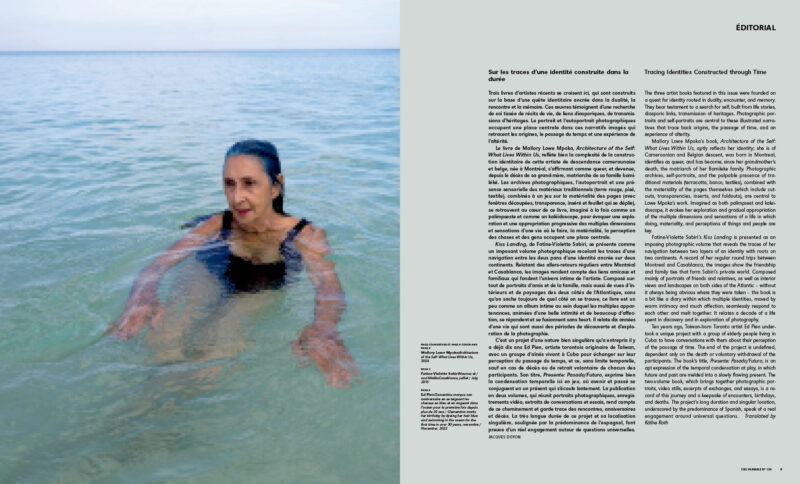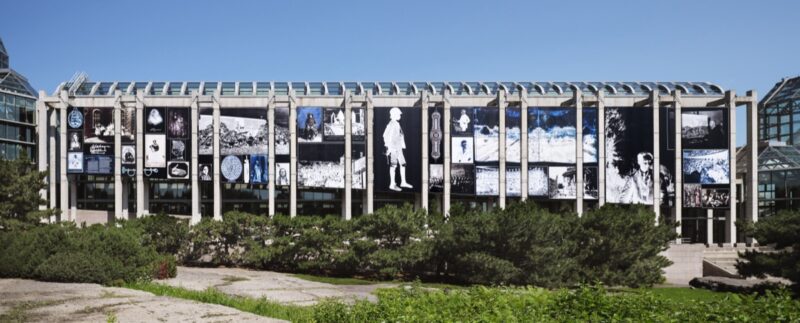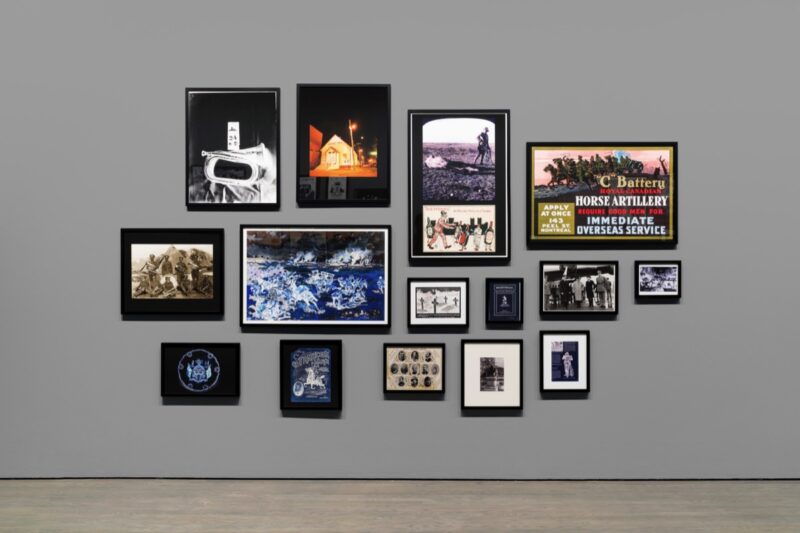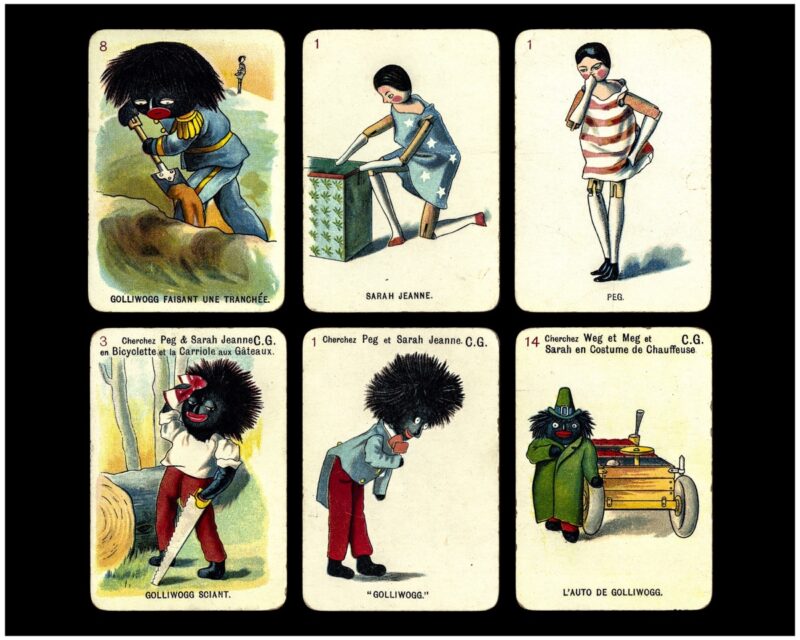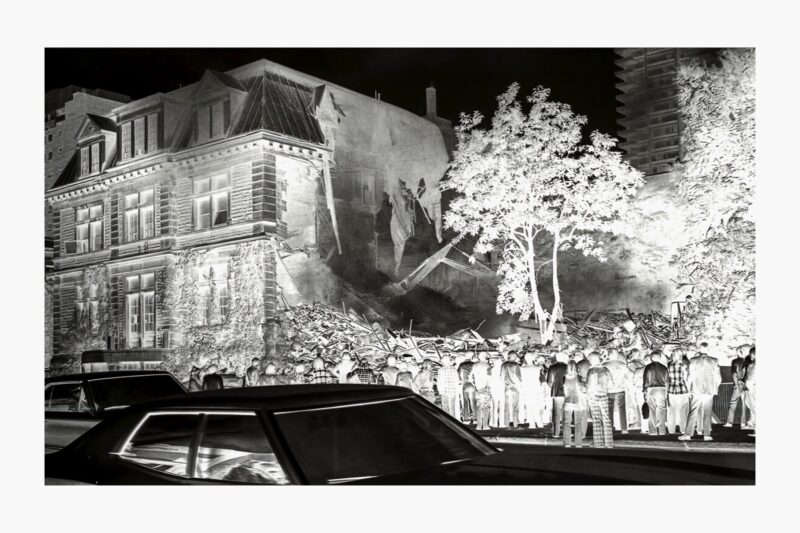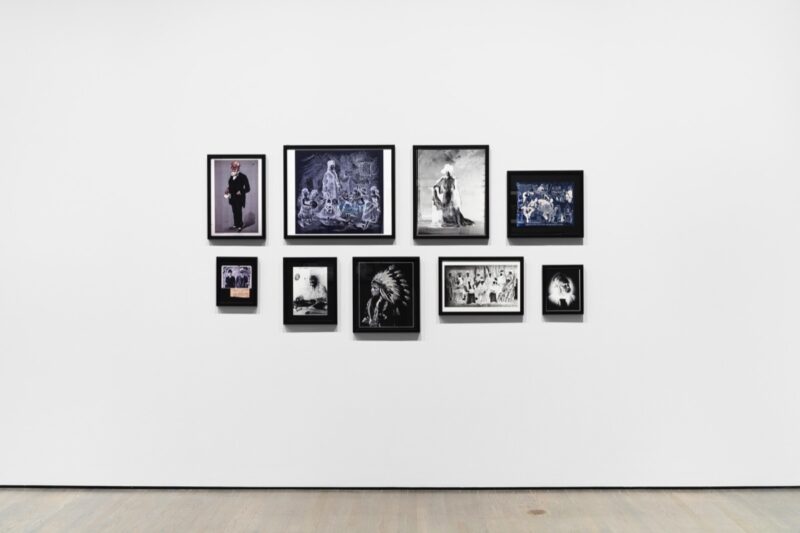[Summer 2025]
Editorial
by Jacques Doyon
The three artist books featured in this issue were founded on a quest for identity rooted in duality, encounter, and memory. They bear testament to a search for self, built from life stories, diasporic links, transmission of heritages. Photographic portraits and self-portraits are central to these illustrated narratives that trace back origins, the passage of time, and an experience of alterity.
Mallory Lowe Mpoka’s book, Architecture of the Self: What Lives Within Us, aptly reflects her identity; she is of Cameroonian and Belgian descent, was born in Montreal, identifies as queer, and has become, since her grandmother’s death, the matriarch of her Bamileke family. Photographic archives, self-portraits, and the palpable presence of traditional materials (terracotta, banco, textiles), combined with the materiality of the pages themselves (which include cut-outs, transparencies, inserts, and foldouts), are central to Lowe Mpoka’s work. Imagined as both palimpsest and kaleidoscope, it evokes her exploration and gradual appropriation of the multiple dimensions and sensations of a life in which doing, materiality, and perceptions of things and people are key.
Fatine-Violette Sabiri’s Kiss Landing is presented as an imposing photographic volume that reveals the traces of her navigation between two layers of an identity with roots on two continents. A record of her regular round trips between Montreal and Casablanca, the images show the friendship and family ties that form Sabiri’s private world. Composed mainly of portraits of friends and relatives, as well as interior views and landscapes on both sides of the Atlantic – without it always being obvious where they were taken – the book is a bit like a diary within which multiple identities, moved by warm intimacy and much affection, seamlessly respond to each other and melt together. It relates a decade of a life spent in discovery and in exploration of photography.
Ten years ago, Taiwan-born Toronto artist Ed Pien undertook a unique project with a group of elderly people living in Cuba: to have conversations with them about their perception of the passage of time. The end of the project is undefined, dependent only on the death or voluntary withdrawal of the participants. The book’s title, Presente: Pasado/Futuro, is an apt expression of the temporal condensation at play, in which future and past are melded into a slowly flowing present. The two-volume book, which brings together photographic portraits, video stills, excerpts of exchanges, and essays, is a re-cord of this journey and a keepsake of encounters, birthdays, and deaths. The project’s long duration and singular location, underscored by the predominance of Spanish, speak of a real engagement around universal questions. Translated by Käthe Roth
[ Complete issue, in print and digital version, available here: Ciel variable 129 – FROM CONTINENT TO CONTINENT ]
[ Complete article in digital version available here: ]

